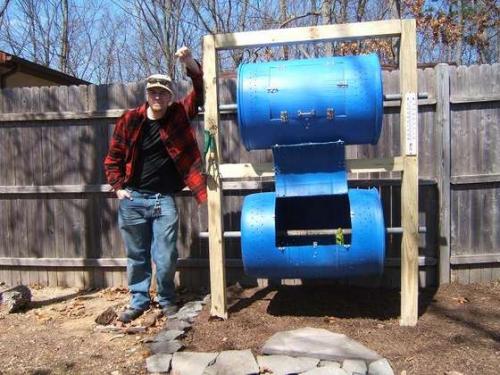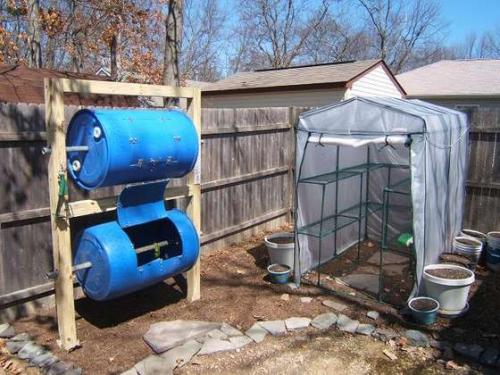Double-Decker Drum Composter
Composting is easy and fun. Kitchen scraps, leaves and lawn clippings are allowed to decompose naturally and they become a healthy, nutrient-rich and beneficial soil for the garden.
In this tutorial, I will show how I made a spinning double drum composter to make soil for my garden.
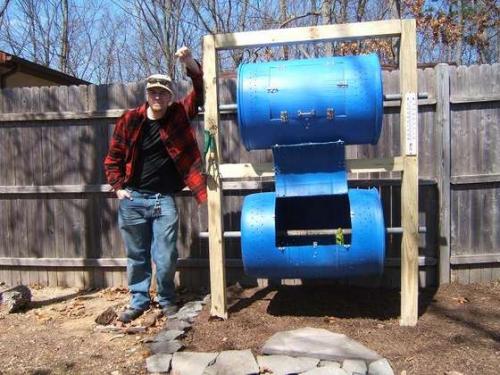
Step 1: Making the frame
I decided against documenting every step with building the frame, mainly because it's a simple enough design.
The frame consists of 3 pressure treated 4x4's and 1 pressure treated 1x4, all eight feet long. One 4x4 was cut exactly in half and the 1x4 was cut into quarters - they were to become the 2 beams and 4 stakes.
I drilled pilot holes through the posts and into the beam and held them together with galvanized lag bolts. Each of the corners where the beam meets the post got corner braces and the top got flat braces. The braces are meant for extra support, since the barrels may become heavy. The space between the top beam and bottom beam was 3 feet.
I used a 2 inch hole saw to cut holes into sides of the posts so they can hold the poles later on.
Then, I used some exterior screws to fasten the stakes to the bottom of the posts. The entire frame gets cemented into the ground later and the 4 stakes offer additional support to the frame.
At the bottom of the posts and stakes, I drilled some screws partially into the wood to hold them into the cement better.
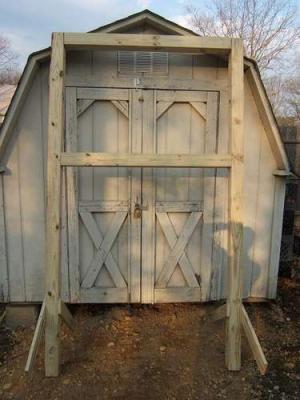
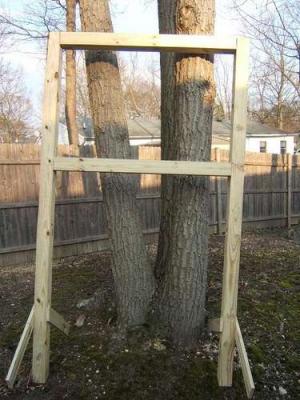
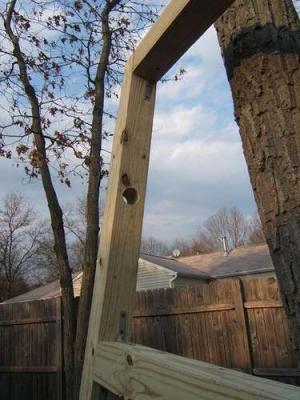
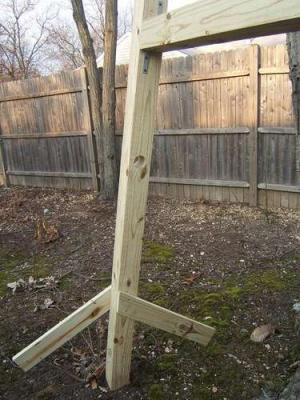
Step 2: Installing the frame
After the frame was complete and I decided where it was going to go, I dug two trenches for the posts and stakes to go into.
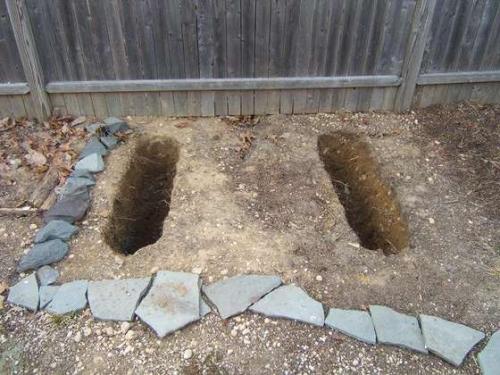
Step 3: Installing the frame
After I dug the holes and set the frame into place, I filled the holes with fast setting cement. Each hole took 6 bags (12 total - 60 lbs. each).
Once the barrels are made and full, they could get very heavy with the compost so the frame and concrete anchors must be strong. I feel as though the stakes and concrete will prevent the frame from leaning or moving much.
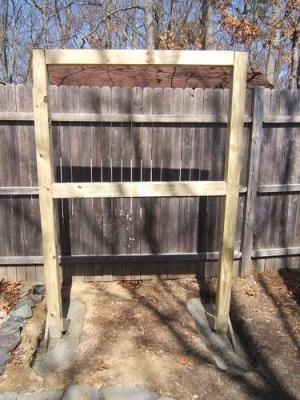
Step 4: The barrel poles
I used galvanized poles left over from another job and cut two 5 foot lengths. These go through the holes in the posts and are what holds the barrel.
Be careful when selecting poles, since they will need to be strong to support the weight of the barrels when they're full.
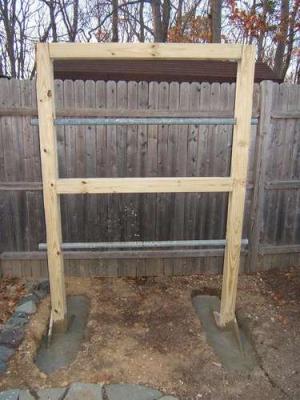
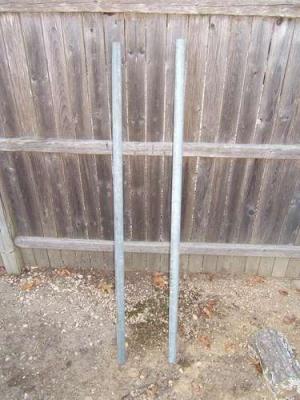
Step 5: The barrels
Once the frame was ready, I began working on the barrels which are made from 55 gallon drums.
I decided to use blue since they get warm and will heat the compost inside. The barrels need to be a dark color since light colors will reflect the sun and heat is important when composting.
Using a 2 inch hole saw, I cut holes exactly in the center of the bottom and top of the barrels. This is what the pole will go through.
Then, using a rotary saw, I cut a rectangular door into each barrel. Take care that the door is big enough to allow comfortable access to the inside of the barrel.
After that, I used a drill to drill several hundred holes all over the barrels to allow for air to circulate inside the barrel. Air is also important when composting.
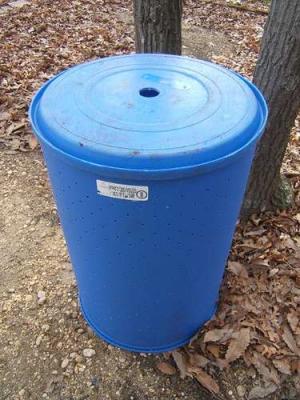
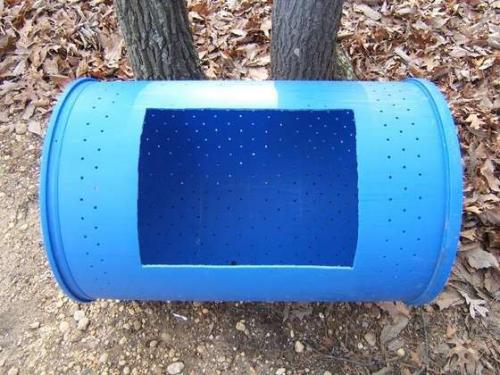
Step 6: The barrels
To make the door, I had to get several pieces of hardware.
I needed 2 flat braces, 2 handles, 4 hinges, 8 barrel locks and enough screws/nuts/washers to hold everything on.
Each door got 4 barrel locks since they work together to hold the door closed while spinning and they help to keep the shape of the door, since they tend to lose their shape and flatten out.
Each barrel also got a flat brace installed inside. It sticks up slightly to prevent the door from falling inward.

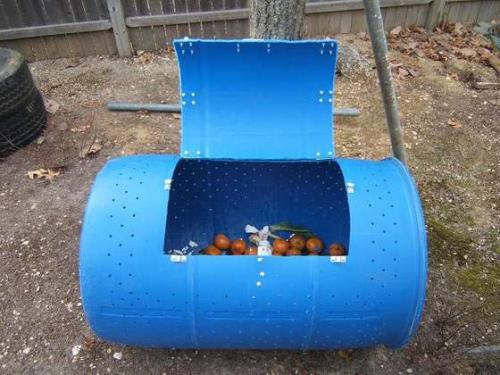
Step 7: The barrels
Now that the barrels were finished, I put the pole through the barrel and put them on the frame.
I checked everything and made sure that the barrels spun on the poles properly.
At this point, the project is complete.
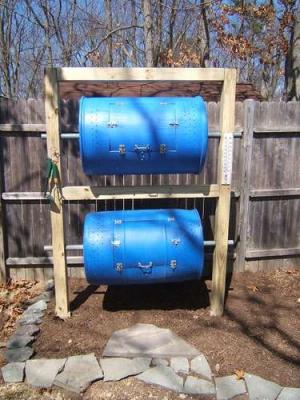
Step 8: Using the composter
Making compost in the barrels is easy. Simply throw all kitchen scraps, lawn clippings, leaves and other organic matter into it and it will decompose naturally and make healthy soil.
Once one barrel is full, the next one can be started on. Rotate the barrels every so often to mix and aerate the compost.
***Take care not to put things like meat and animal feces into the the compost - only vegetables and plants. However, one exception to this would be eggshells. If unsure, do an internet search on composting to find lists of acceptable materials.***
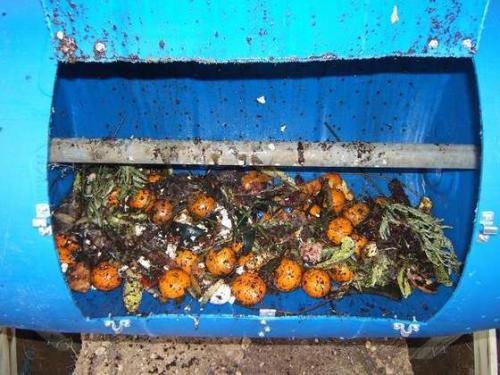
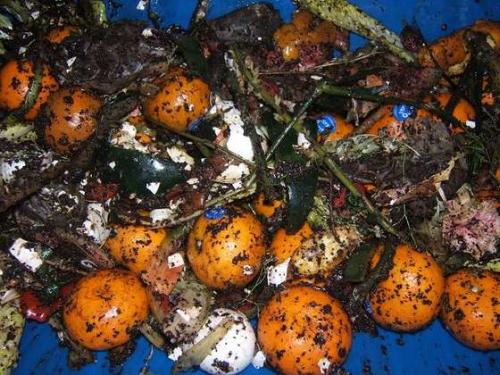
Step 9: Optional (but helpful) hint
This step is purely optional, but I don't want to have to make a trip out to the composter every time I make something in the kitchen, so what I do is keep a little plastic bin in my freezer. I put everything in there and when it gets full, I dump it into the composter. It melts and decays right along with everything else and saves me a few trips.
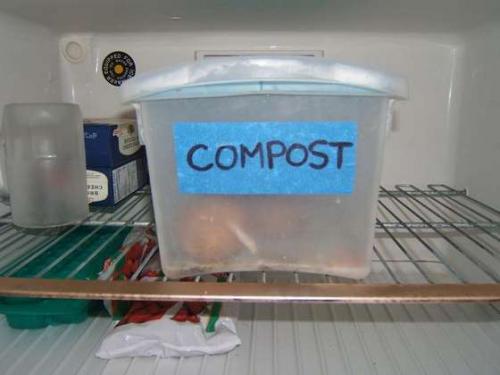
Summary:
I really had a good time making this project. It was easy enough and the design was quite simple. Now, by next spring, I should have some great compost for my garden so I can grow some healthy plants.
I can't wait for spring to come on full-force!
